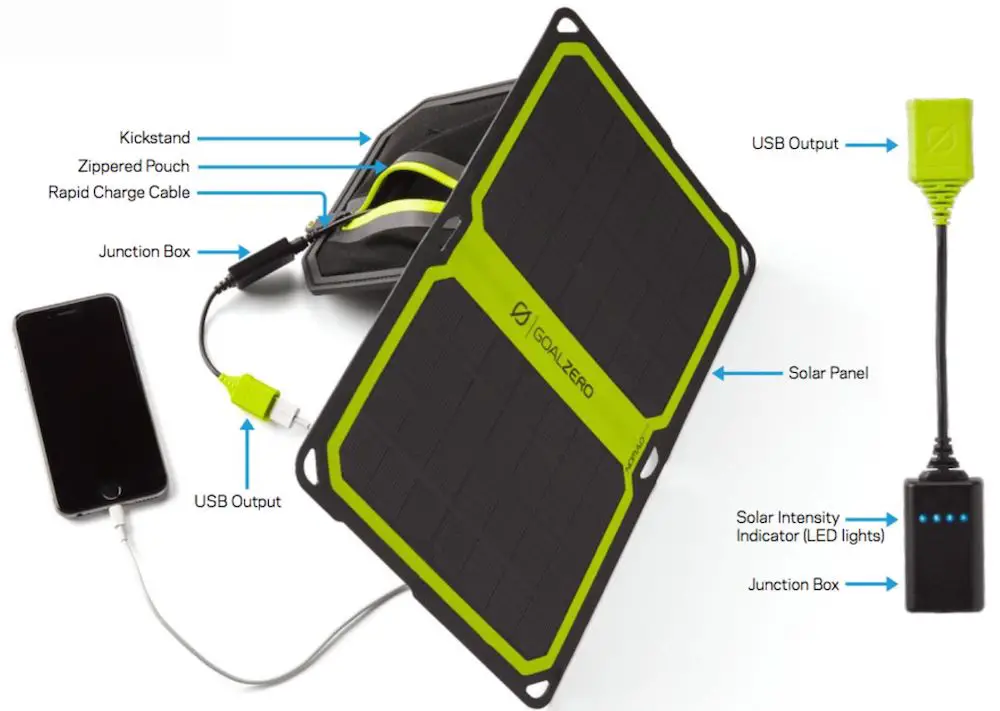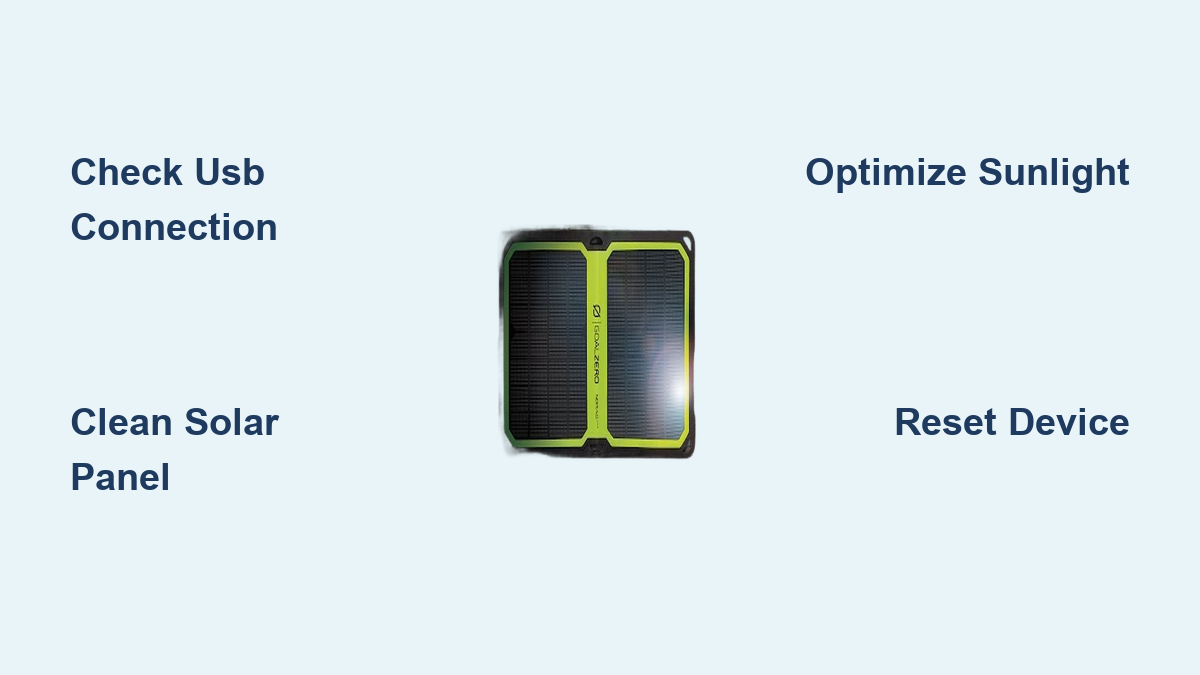Are you frustrated that your Goal Zero Nomad 7 Plus solar panel isn’t charging your devices? It’s incredibly disheartening to invest in portable solar power and find it’s not working when you need it most. A quick check of the connections and a panel reset often resolves the issue, getting you back to charging on the go.
This comprehensive guide will walk you through pinpointing why your Nomad 7 Plus isn’t charging, from simple fixes you can do in minutes to more in-depth troubleshooting steps. We’ll cover common causes, multiple solutions, preventative maintenance, and when it’s time to call in the professionals. By the end of this article, you’ll have the knowledge to confidently diagnose and resolve the issue, ensuring your Nomad 7 Plus powers your adventures for years to come.
Common Causes of Goal Zero Nomad 7 Plus Not Charging
Several factors can prevent your Nomad 7 Plus from delivering power. Here’s a breakdown of the most frequent culprits:
Dirty Solar Panel Surface
Dust, dirt, and debris significantly reduce the panel’s efficiency. Even a thin layer can block sunlight and hinder charging.
Faulty USB Connection
The USB port on the panel or the cable connecting it to your device can be damaged or loose, interrupting the power flow.
Incorrect Sunlight Exposure
Solar panels require direct sunlight to operate optimally. Cloudy conditions, shade, or incorrect panel angle drastically reduce output.
Damaged Solar Cells
Physical damage to the solar cells, even if not immediately visible, can impair their ability to generate electricity.
Internal Component Failure
Less common, but possible, is a failure of internal circuitry or the voltage regulator within the Nomad 7 Plus.
How to Fix Goal Zero Nomad 7 Plus Not Charging

Let’s dive into several methods to get your Nomad 7 Plus charging again, starting with the simplest and progressing to more advanced solutions.
Method 1: Quick Connection & Surface Check
This is the first step and often resolves the issue.
Diagnosing the Issue
Ensure the USB cable is securely connected to both the Nomad 7 Plus and your device. Visually inspect the cable for any signs of damage. Check the panel surface for visible dirt or debris.
Fix Steps
- Disconnect and Reconnect: Unplug the USB cable from both ends and firmly reconnect them.
- Try a Different Cable: Swap the existing USB cable with a known working one to rule out a faulty cable.
- Clean the Panel: Use a soft, damp cloth to gently wipe the solar panel surface, removing any dirt, dust, or debris. Avoid harsh chemicals or abrasive cleaners.
- Check USB Port: Examine the USB port on the Nomad 7 Plus for any bent pins or damage.
Testing
Plug the Nomad 7 Plus into your device in direct sunlight. Observe if charging begins.
Method 2: Optimize Sunlight Exposure
Correct sunlight exposure is critical for effective charging.
Diagnosing the Issue
Observe the panel’s surroundings. Is it shaded? Is the sun directly overhead or at a low angle?
Fix Steps
- Positioning: Place the Nomad 7 Plus in direct sunlight, avoiding any shadows.
- Angle Adjustment: Adjust the panel’s angle to face the sun directly. The optimal angle varies depending on your location and the time of year. (Generally, aim for a 45-degree angle).
- Sun Tracking: Periodically adjust the panel’s position throughout the day to follow the sun’s movement.
Testing
Monitor the charging process after adjusting the panel’s position.
Method 3: Resetting the Nomad 7 Plus
Sometimes, a simple reset can resolve internal glitches.
Diagnosing the Issue
This method is useful if the panel seems unresponsive even in direct sunlight with a known good cable.
Fix Steps
- Disconnect Everything: Unplug any devices connected to the Nomad 7 Plus.
- Brief Exposure to Darkness: Cover the solar panel completely for about 30 seconds. This forces a reset of the internal circuitry.
- Reconnect: Reconnect your device and expose the panel to direct sunlight.
Testing
Observe if the panel resumes charging.
Method 4: Inspect for Physical Damage

Damage to the solar cells can prevent charging.
Diagnosing the Issue
Carefully examine the solar panel surface for cracks, chips, or other visible damage to the solar cells.
Fix Steps
- Visual Inspection: Use a magnifying glass to closely inspect the cells for micro-fractures.
- Professional Assessment: If damage is detected, discontinue use and contact Goal Zero support (see the “Professional Help” section). Do not attempt to repair damaged solar cells yourself.
Testing
If there’s visible damage, the panel likely needs professional repair or replacement.
Prevention Tips and Maintenance Advice

Preventative maintenance will extend the life of your Nomad 7 Plus and minimize charging issues.
- Regular Cleaning: Clean the panel surface every few weeks with a soft, damp cloth.
- Proper Storage: Store the panel in a clean, dry place when not in use. Protect it from extreme temperatures and humidity.
- Cable Management: Avoid bending or kinking the USB cable, as this can damage the internal wiring.
- Gentle Handling: Treat the panel with care to avoid physical damage.
- Avoid Prolonged Exposure to Extreme Weather: While designed for outdoor use, prolonged exposure to harsh weather conditions can degrade performance.
Pro Tips
- Use a USB Voltage/Current Meter: This inexpensive tool allows you to monitor the panel’s output and identify potential issues.
- Optimal Cable Length: Use the shortest possible USB cable to minimize voltage drop.
- Charging Multiple Devices: Be aware that charging multiple devices simultaneously will reduce the charging speed for each device.
- Solar Panel Angle Finder Apps: Utilize apps to determine the best angle for your location and time of year.
- Avoid Charging in Extreme Heat: High temperatures can reduce solar panel efficiency.
Professional Help
- Signs You Need Professional Help: Visible damage to the solar cells, consistent charging failures despite troubleshooting, or suspected internal component failure.
- Finding a Service Provider: Contact Goal Zero support directly through their website (https://www.goalzero.com/) or authorized retailers.
- Typical Cost Ranges: Repair costs vary depending on the extent of the damage. A full panel replacement may be more cost-effective than repair for significant damage.
- Warranty Considerations: Check your Nomad 7 Plus warranty to see if the issue is covered.
FAQ
Q: Why is my Nomad 7 Plus charging so slowly?
A: Slow charging can be caused by insufficient sunlight, a dirty panel, a long USB cable, or the device you’re charging having high power demands.
Q: Can I use a USB hub with my Nomad 7 Plus?
A: While technically possible, using a USB hub can reduce the charging speed and may not provide enough power for all connected devices.
Q: Is the Nomad 7 Plus waterproof?
A: The Nomad 7 Plus is water-resistant, but not fully waterproof. Avoid submerging it in water.
Q: How long will the Nomad 7 Plus last?
A: With proper care and maintenance, the Nomad 7 Plus should last for several years.
Q: What does the LED indicator mean?
A: The LED indicator shows the charging status. A solid green light indicates optimal charging, while a flashing light may indicate an issue. Consult the Goal Zero user manual for specific LED codes.
Get Your Goal Zero Nomad 7 Plus Working Again
You’ve now explored a range of solutions to troubleshoot your Nomad 7 Plus. Remember to start with the simplest fixes—checking connections and cleaning the panel—before moving on to more advanced steps. By following these guidelines, you can regain the freedom of portable solar power.
Have you successfully fixed your Nomad 7 Plus? Share your experience, or a specific problem you’re still facing, in the comments below to help other readers!

